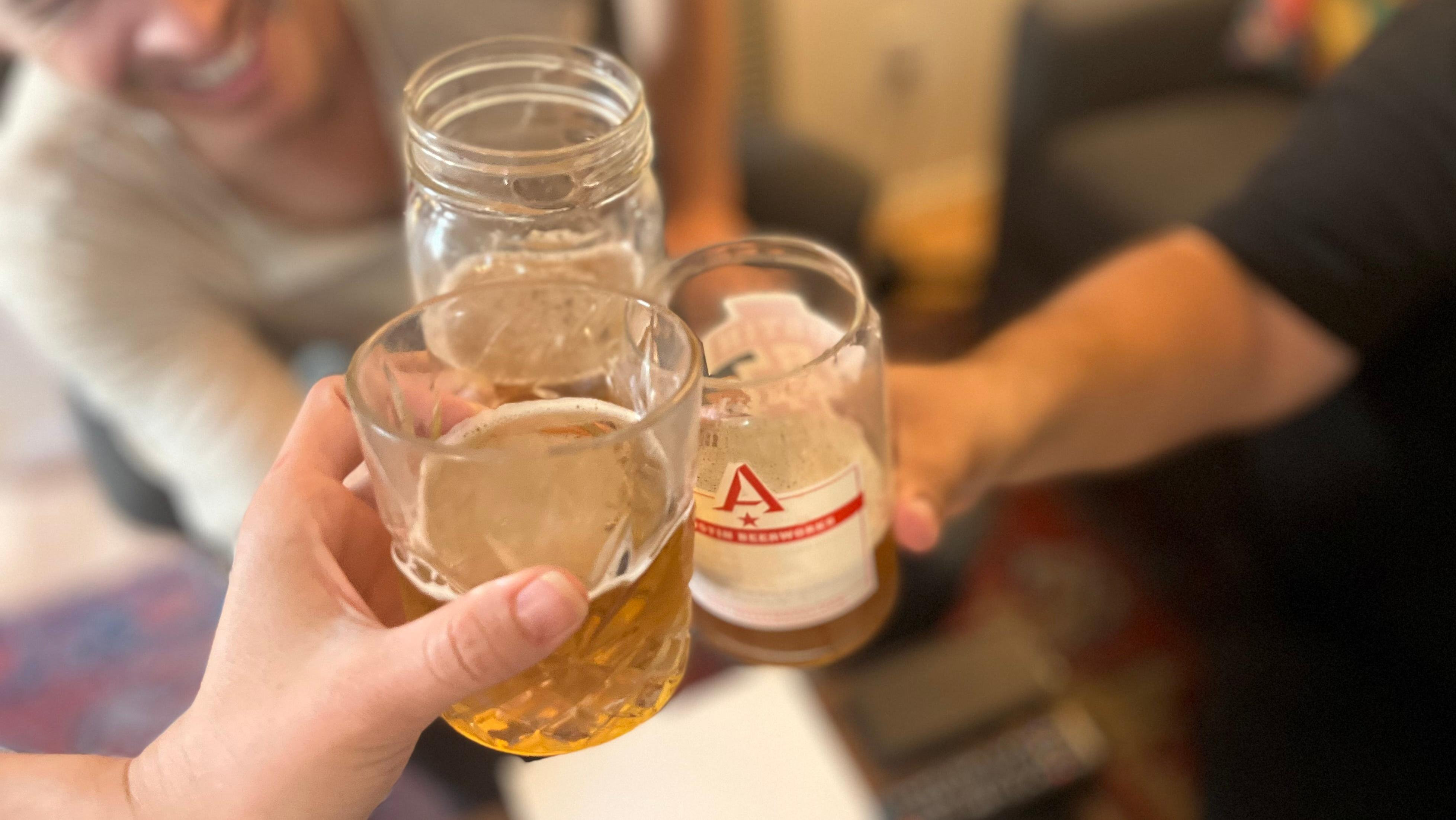We Tasted The Top-Selling Beers In America And We Were Very Surprised
We have opinions on which of the leading summer beers are worth cracking open at a barbecue.
My teenage years smell like domestic beer, skate ramp wood, and bad cloves. I am trying to forget it all. I fell in love with craft beer in my twenties and started with Sierra Nevada Pale, jumping to Russian River, Modern Times, and finally to Brouwerij West, Mikkeller, Breakside, Fremont, Smog City, Little Beast, and Jester King, all of which are among my current favorites. But what happens when you are traveling and the gas station only has the basics? Which brews do you turn to?
The best way to find out is to do what I did: try them all in a side-by-side taste test with some pals and a scoring sheet. We got some real beer snobs together to help you make an informed decision the next time you're out buying mass-market beer. I drank these brews with the most discerning beer fans I know:
- Lola Paja, actor
- Erik, carpenter
- Ritch Ruiz, comedian and chef/ owner of Stand Up Comida
Below are the tasting notes for the top eight best-selling beers in the United States, which your local convenience store is most likely to carry (and at an affordable price, too). Here's what we found out after tasting and ranking each beer—just a bit hyperbolically—on a scale of 1-100.

Budweiser
It now just says Freedom right on the can! An American classic first brewed in 1876, Budweiser is a light lager with a slightly sweet taste, and it's one of the most popular beers in the country. We all thought this one tasted like malt and corn syrup. Budweiser is good for people who want something undeniably sweet to sip on all afternoon. Average score: 15
Coors Light
First introduced in 1978, Coors Light is now the second-best-selling beer in the US. It's a light lager with a crisp, refreshing taste, one that left us all pleasantly surprised. This was the most beloved of the "light" beers from everyone, hands down. If we had to say why, it's because Coors was more balanced than the others. Average score: 35
Miller Lite
Miller Lite has been around since 1975, and it was the first successful light beer. It's a light lager with a slightly sweet taste and fewer calories than other beers. Everyone on our tasting team noted the watery taste of this beer. However, that quality is valuable if you want to pound a lot and not get slowed down by too much flavor. A fun fact we learned was that Budweiser is made with rice, while Miller Lite uses corn. I thought the corn would make the beer sweeter, but no dice. Still, everyone agreed Miller Lite would be best for beer pong. Average score: 10
Bud Light
This is the number-one best-selling beer in the United States, and it's now been on the market for 40 years (since 1982). To many, Bud Light is the top seller because it is a straightforward light lager that emphasizes its "refreshing" taste. But no one in our group wanted to get through more than 8 ounces of Bud Light; it combines the sweetness of the original Bud with the watery qualities of Miller Lite, and the results weren't as good as either of those other options. Average score: 8
Corona Extra
First brewed in Mexico City in 1925, Corona Extra is America's best-selling import beer. It's a light, refreshing pale lager with a slightly sweet taste—but not as sweet as the Bud products by a long shot. Our group rated this beer higher because of how well it'd pair with camping and barbecue. Most of our tasters could pinpoint the Corona right away. Average score: 45
Heineken
Heineken, which has been around since 1873, is one of the world's most popular beers. It's a light lager with a crisp, nutty finish. Because of that nuttiness, none of us really got to the actual finish; in fact, no one could imagine drinking more than half of one. When you want a mass-market beer to crush in the summertime, you have better options. Average score: 15
Stella Artois
The name of this Belgian lager may sound fancy-shmancy, but it had the flavor to back it up. Stella Artois won our taste test by a landslide. It had everything we were looking for. More complex. More balanced. Exceedingly drinkable. It makes sense they've been brewing this one for 600 years. Average score: 60
Michelob Ultra
This was in the top three of least favorite beers. A good option for people who want to hold a bottle at parties but don't like too much beer flavor. Average score: 5
There's a reason that the top-selling beers in the United States are all light lagers and pilsners: they're perfect for quenching your thirst on a hot weekend while you're playing cornhole in the backyard. In that way, they're downright superior to the heavier craft beers you might sip on at the bar.
While Stella Artois impressed us the most among these bestsellers, Sierra Nevada Pale Ale offers the slightly hoppy taste that is still my go-to for camping. That said, try my summer drinking style: drink one or two of your favorite craft beers, then switch to one of these budget options once the taste buds have demurred.
Whatever beer you land on, make sure you're drinking one that checks your boxes for sweetness, complexity, and drinkability. There are multitudes to explore at the gas station.
